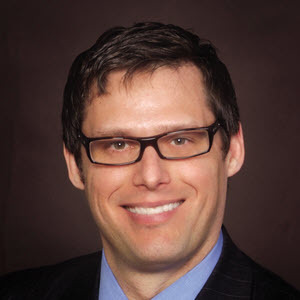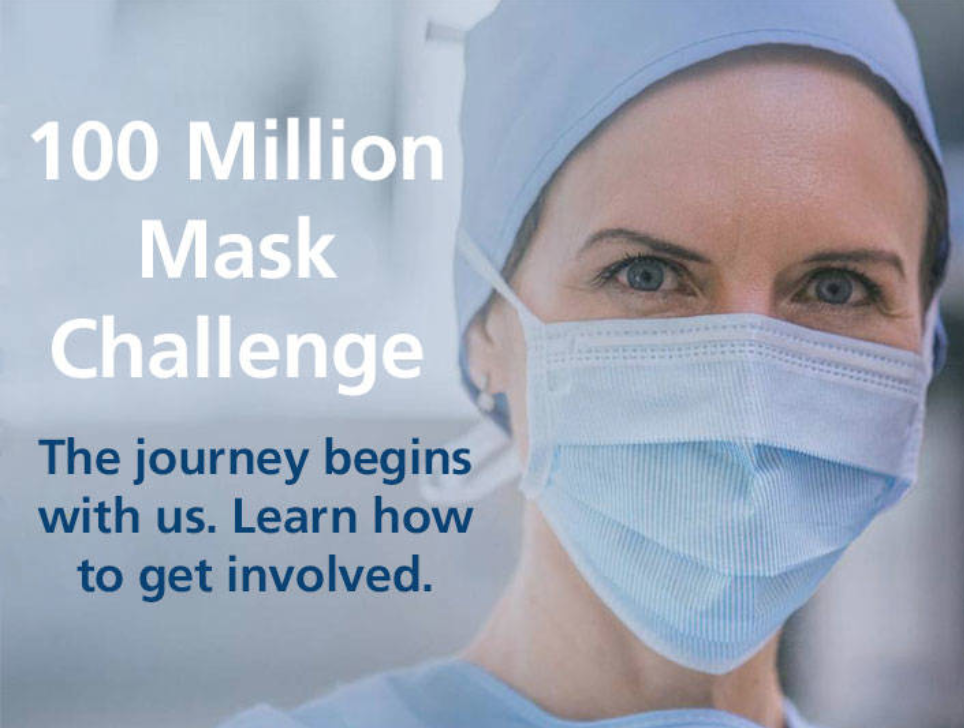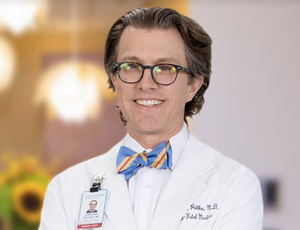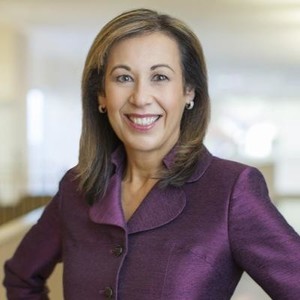Marketing, Communication Experts Share Reflections from the Frontlines of the COVID-19 Pandemic
// By Kyle Hardner //
 Amid the COVID-19 pandemic, U.S. health care facilities face a tsunami of rapid-fire change. Hospital marketing leaders, historically charged with promoting signature service lines, are rapidly transforming their role and their tactics to meet this unprecedented challenge.
Amid the COVID-19 pandemic, U.S. health care facilities face a tsunami of rapid-fire change. Hospital marketing leaders, historically charged with promoting signature service lines, are rapidly transforming their role and their tactics to meet this unprecedented challenge.
The new key priorities for health care marketing leaders include providing up-to-the-minute, accurate information to key stakeholders, reassuring the worried well, preparing for a potential surge of COVID-19 patients, and orchestrating an enormous number of calls, questions, and donation requests from the communities they serve.

Ed Rafalski, PhD, chief strategy and marketing officer for BayCare Health
Last week, four industry experts shared stories from the frontlines of the COVID-19 pandemic in a Strategic Health Care Marketing webinar. The participants discussed how they are keeping pace with the evolving needs of their health systems and the communities they serve. They also reflected on how their systems are preparing for life post-COVID-19.
“As we work our way through each problem, we’re learning and we’re adapting, and health systems are going to learn so much from this crisis that we’ll apply for the future,” says Ed Rafalski, PhD, chief strategy and marketing officer for BayCare Health on Florida’s Gulf Coast.
Mobilizing the Earliest Response

Sara Vaezy, chief digital strategy and business development officer, Providence St. Joseph Health
Providence Regional Medical Center in Everett, Washington, cared for the first confirmed COVID-19 patient in the U.S. on January 20, 2020. That made Providence St. Joseph Health the nation’s initial health system to mobilize its Emergency Operations Command Center. “I’ve been doing daily huddles since February and it’s been all-hands-on-deck, with activities occurring in every domain of Providence,” says Sara Vaezy, Providence’s chief digital strategy and business development officer.
Vaezy’s team turned to technology to help balance the influx of questions and patients from community members. They worked with Microsoft Azure Stack to stand up a coronavirus assessment bot on the system’s public-facing COVID-19 website. The bot asks patients questions about their symptoms, travel history, and interaction with any people who have tested positive for COVID-19. The answers determine which patients need a higher level of care or further evaluation.
Providence also uses video visits to help triage patients. “We’ve seen 10 to 15 times greater utilization of video visits since the outbreak began,” Vaezy says. In addition, Providence’s team uses the secure messaging platform Twistle to connect providers with COVID-19 patients who are self-monitoring at home.
Vaezy’s team uses Providence’s COVID-19 microsite to distribute news, information, and donation opportunities to community members, including publicizing a “100 Million Mask Challenge” that drew response from people and companies throughout the Seattle area. It’s also offering its assessment bot free of charge to other health systems.

The response to Providence’s million-mask challenge was overwhelming, helping the organization meet the demand for PPE while waiting for local manufacturers to scale their production of masks and face shields.
“Our goal first and foremost is to serve our Providence communities and our caregivers, and then to make it available to others,” Vaezy says.
Answering the Call in Southern Connecticut

Christian Pettker, MD, associate chief quality officer, Yale Medicine
On March 9, as New Rochelle, New York, became one of the early COVID-19 hotspots, Yale New Haven Health opened its coronavirus call center. “That first day we had 15 agents and took 371 calls,” says Christian Pettker, MD, the system’s associate chief quality officer. “Now we’re handling about 2,400 calls a day.” The center answers questions from the worried well, triages patients to telephone or video visits with a Yale clinician, assesses whether patients need COVID-19 testing, and provides care recommendations for other related illnesses, such as influenza.
Shortly after opening the call center, Yale began receiving calls from patients who attended a party in Westport, Connecticut, that The New York Times called a “super spreader” of COVID-19. “We were able to help that community by getting people lab tests and telling them to self-isolate,” Pettker says.
Unfortunately, the call center couldn’t prevent the closing of a local urgent care facility that had cared for three of the people who had attended the party. “We felt bad that nobody had heard about our hotline because it was so early in the game,” Pettker says.
As call center volumes grew exponentially, Pettker and his team rapidly scaled call center staffing. They stored training materials on a SharePoint site and used PowerPoint to prepare slides with videos explaining updated care recommendations. “We also kept a continuous Skype line going on in the background so agents could type questions to a line leader and get answers to those questions as they came up,” Pettker says.
Delivering a Consistent Message

Suzanne Hendery, chief marketing and communications officer, Renown Health
Prior to COVID-19, the “communication” part of marketing and communication wasn’t well understood by many health system leaders, says Suzanne Hendery, chief marketing and communications officer at northern Nevada’s Renown Health. “Now, communication has a flaming platform on which to stand,” Hendery says.
Renown’s biggest challenge: creating a single source of truth. To disseminate consistent messages to its 7,000 employees; 2,000 physicians; and community members, Hendery and her team publish daily wrap-ups on Renown’s intranet page and provide huddle sheets to clinical workers who don’t regularly check computer systems. These updates include all major decisions made by the system’s incident command team, along with self-care tips for staff.
“We have to make sure our communication is accurate and reduces anxiety,” Hendery says. “We’re looking at every single word from a communicators’ standpoint to make sure we’re not adding fuel to the fire.”
Hendery stresses that the pandemic is a marathon, not a sprint, so preserving energy and transferring leadership is important. As an example, Renown is rotating public information officer responsibilities every seven days.
Confronting Social Listening Concerns
At BayCare Health, Rafalski and his team stood up multiple channels to triage the worried well, including telemedicine using the Amwell platform, an RN triage call center, and a Clearstep self-triage tool on its public website. Early in the pandemic, BayCare faced a key question: what to do with its reputation management approach.
BayCare uses a proactive review strategy, asking all its clients to write an online review. Early on, BayCare’s operations team paused the strategy. But then it had a change of heart. “The thinking is that we want our customers to provide feedback so we can course-correct even in a crisis,” Rafalski says.
Through social listening, BayCare tracks social chatter around available testing, symptoms to watch, and other COVID-19 topics.
BayCare also helps coordinate regional response to COVID-19 in its communities, working with the local health department to facilitate drive-through screenings. “We’re viewed as a resource, and that’s important, because we are owned by the community as a not-for-profit,” Rafalski says.
Preparing for a Post-COVID-19 World
Webinar participants agreed lessons learned so far during the pandemic will last into the future, including reliance on telemedicine. Another unexpected change: a rise in the necessity of remote work for many marketing and communication teams. Renown, for example, uses Microsoft Teams to keep its staff connected. “It allows us all to work remotely from wherever we are,” Hendery says. “Working in the office will probably never be the same again.”
Kyle Hardner is a professional writer, editor, and ghostwriter with 20 years of experience in the health care, technology, and B2B fields.
Related Articles
Special COVID-19 Coverage
Access pandemic-related coverage free of charge (with registration)
To access this content...
Members: Please log in. (No need to register again.)
Not a member?
- Option 1: Join now and get access to all the resources on this site.
- Option 2: Register here to access COVID-19 coverage for free.

